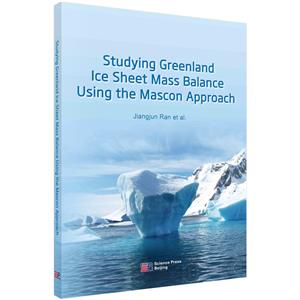Preface
Abstract
1 Challenges and opportunities of mass variations in Greenland 1
1.1 Climate change and icemelt in Greenland 1
1.2 Contemporary challenges 3
1.3 Opportunities 4
2 GrIS mass variation: an overview 7
2.1 Introduction 7
2.2 GrIS Glaciers.7
2.3 Maalance of the Greenland Ice Sheet 8
2.4 GrIS mass variation estimation.9
2.4.1 Altimetry 9
2.4.2 The input-output method (IOM) 10
2.4.3 Satellite gravimetry 11
2.4.4 Comparison of GrIS mass anomalies estimated by different methods 12
2.5 Summary 13
3 GRACE post-processingmethodologies: an overview 15
3.1 Introduction.15
3.2 Towards high spatial resolution methodologies 15
3.2.1 Themascon approach by Luthcke et al(2006a) 16
3.2.2 Themascon approach by Luthcke et al(2013) 17
3.2.3 Themascon approach by Sasgen et al(2010) 18
3.2.4 Themascon approach by Schrama andWouters (2011) 19
3.2.5 Themascon approach by Baur and Sneeuw (2011) 20
3.3 Summary 21
4 Statistically optimal estimation of Greenland Ice Sheetmass variationr/>
from GRACEmonthly solutions using an improved mascon approach 23
4.1 Introduction.23
4.2 Methodology 26
4.2.1 Gravity disturbances .26
4.2.2 Parameterization 29
4.2.3 Distribution of data points 30
4.2.4 Data inversion.31
4.3 Numerical experiments 32
4.3.1 Experimental setup 32
4.3.2 Choice of the optimal data processing strategy 36
4.3.3 Spectral consistency 43
4.4 Real GRACE data analysis 46
4.4.1 Estimating mass anomaly uncertainties.47
4.4.2 Validation against modelled SMB time-series 48
4.4.3 Comparison with Greenland mass anomalies from other studies 52
4.5 Summary 54
5 Seasonalmass variations show timing and magnitude of meltwater storage in the Greenland Ice Sheet .57
5.1 Introduction 57
5.2 Adopted parameterization 59
5.3 Data 60
5.3.1 Ice discharge on multi-year scale 60
5.3.2 Ice discharge on intra-annual scale 60
5.4 Results and Discussion 63
5.4.1 Multi-year mass trend and acceleration budgets 63
5.4.2 Seasonal mass variations 67
5.5 Summary 76
6 Analysis and mitigation of biases in Greenland Ice Sheet maalance trend estimates from GRACE mascon products 79
6.1 Introduction 79
6.2 Methods 81
6.2.1 Variant of themascon approach adopted to estimatemass anomalies 81
6.2.2 Adopted spatial constraints 82
6.3 Data 85
6.3.1 GRACE.85
6.3.2 RACMO2.3 86
6.4 Results .86
6.4.1 Understanding the discrepancieetween the CSR, JPL and GSFC mascon products 86
6.4.2 Numerical study to analyze regularization-driven biases in mascon-type estimates .89
6.4.3 Improved spatial constraints 92
6.5 Discussion.98
6.5.1 Global mass conservation 98
6.5.2 “Improved” regularization vs regularizations applied to other mascon solutions 98
6.5.3 ed value of the “improved” regularization 99
6.6 Summary 99
7 Optimal mascon geometry in estimating mass anomalies within Greenland from GRACE103
7.1 Introduction 103
7.2 Methodology and parameterization 104
7.2.1 Adopted mascon approach 104
7.2.2 Parameterization of Greenland.105
7.3 Numerical study 107
7.3.1 Experimental set-up.107
7.3.2 Results 111
7.4 Analysiased on real GRACE data 126
7.4.1 Analysis of long-termlinear trends 128
7.4.2 Analysis of the estimates at the intermediate and short time scales 130
7.5 Summary.134
8 Conclusions 137
References 143
A Eigenvalue decomposition of the noise covariance matrix Cd .153
B Robustness of GRACE-based estimates at the intra-annual time scale 157
C Supporting Information for Chapter 6.161

















